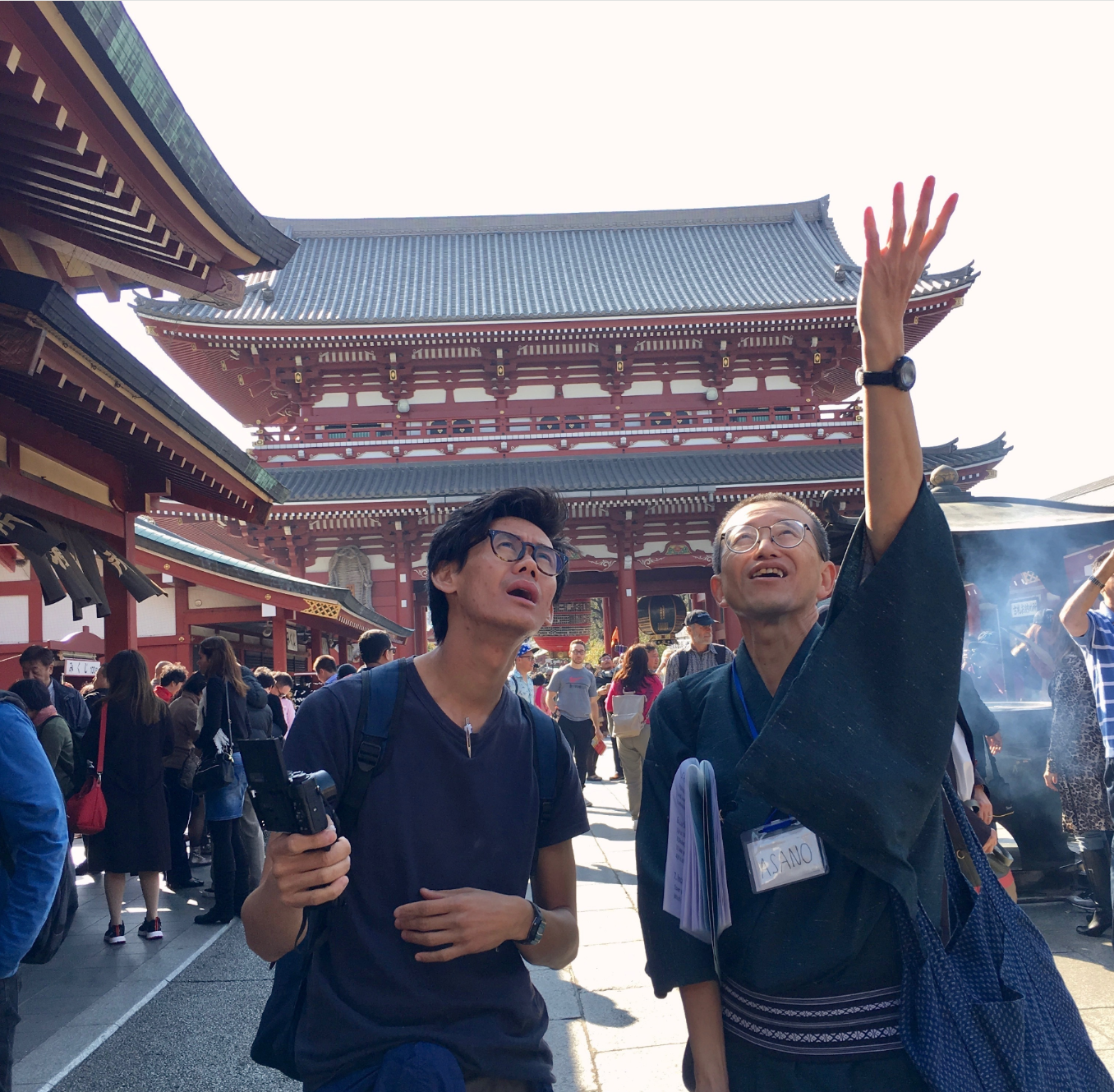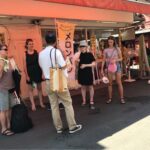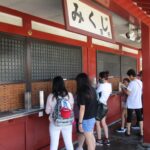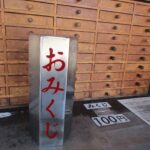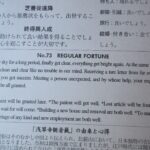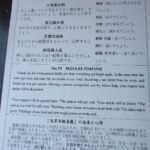Many thanks for joining our tour in Asakusa on August 26. We had seven friendly guests from France, Holland and Spain. Although it was very hot and humid, I hope you had a good time with us.


Omikuji at Sensoji are randomly drawn predictions ranging from a bad fortune to a good one with seven categories. People say Sensoji’s omikuji have more bad fortunes than at other places. It is partly true. Nevertheless, omikuji here are very popular.
How to draw omikuji? Drop 100 yen coin into the slot. Pick up the silver canister that includes 100 sticks. Shake the can for long as you think it’s sufficient and take out a wooden stick with a number. Then find the corresponding drawer and take a fortune slip that may decide your fate. English translation is available.
If your strip is a bad fortune, not to worry. You may tie it on the rack at the designated area and leave the fortune behind. The temple priest will pray for the bad luck to go away. If it’s a good one, just bring it back home. The percentage to draw a bad luck is not low. The probability of a bad luck is 30%(70% for lucky fortunes). Meaning, There are 30 unlucky sticks out of 100 in the box. Sensoji follows the original rules. Many other temples and shrines are deliberately lowering the percentage of a bad luck fortune. On the other hand Sensoji keeps the traditional rules and practice which deserve a cultural value. When you get a bad fortune, I suppose you feel like drawing again. Omikuji are the written oracle and advice of the Buddhist gods and redrawing is to ignore their advice. Consequently, redrawing is not recommendable. If you want to try one more time, it’s better to draw at other occasions on another day.
Omikuji were originally created by a notable priest, Ryogen, head of Enryakuji Temple over a thousand years ago during the Heian period(794-1185). Enryakuji is known for the temple where a number of outstanding Buddhist predecessors were trained. He was the person of multiple talents with the power of prayer and a miraculous virtue in Buddhism. In the past, pictures were depicted rather than letters in the light of the low literacy rate.
According to the original text there is a lesson. If you get a good fortune but are careless and arrogant with the good luck, it will change to a bad one. If you draw a bad fortune, it will eventually become a good one should you stay sincere and patient.
Visitors will find some interests to experience the unique aspect of Japanese culture. Omikuji are thrilling, exciting and a great fun. Let’s challenge Sensoji’s omikuji while you are in Tokyo. We are looking forward to seeing you in Asakusa soon.
(posted by Yoshi)

